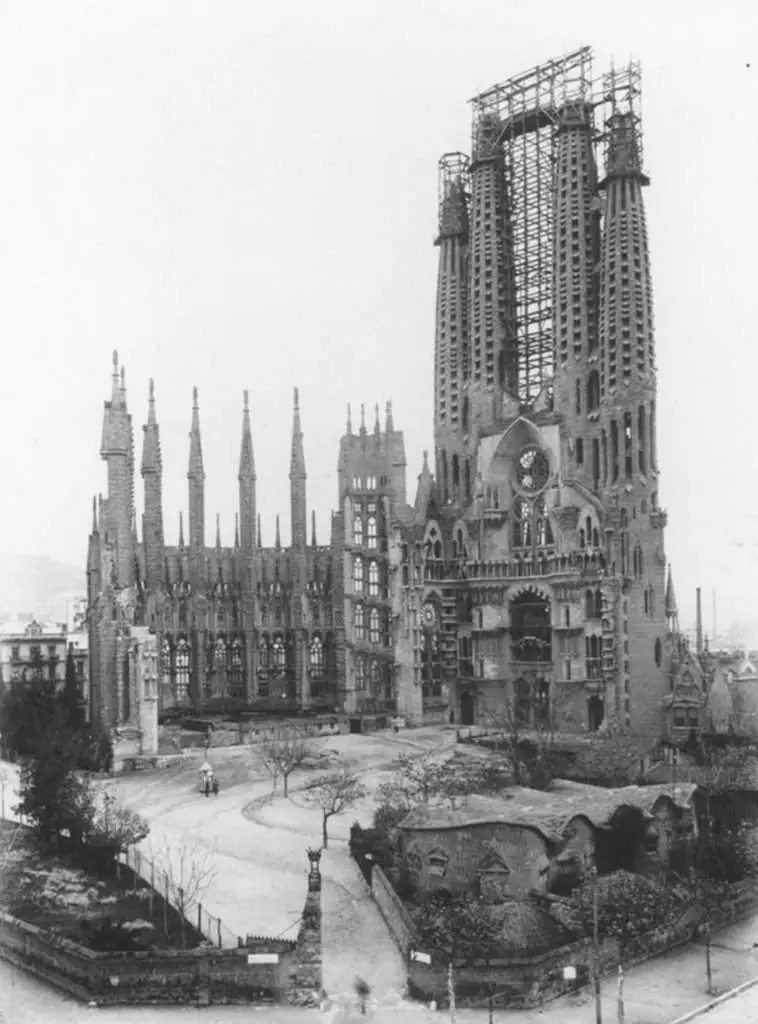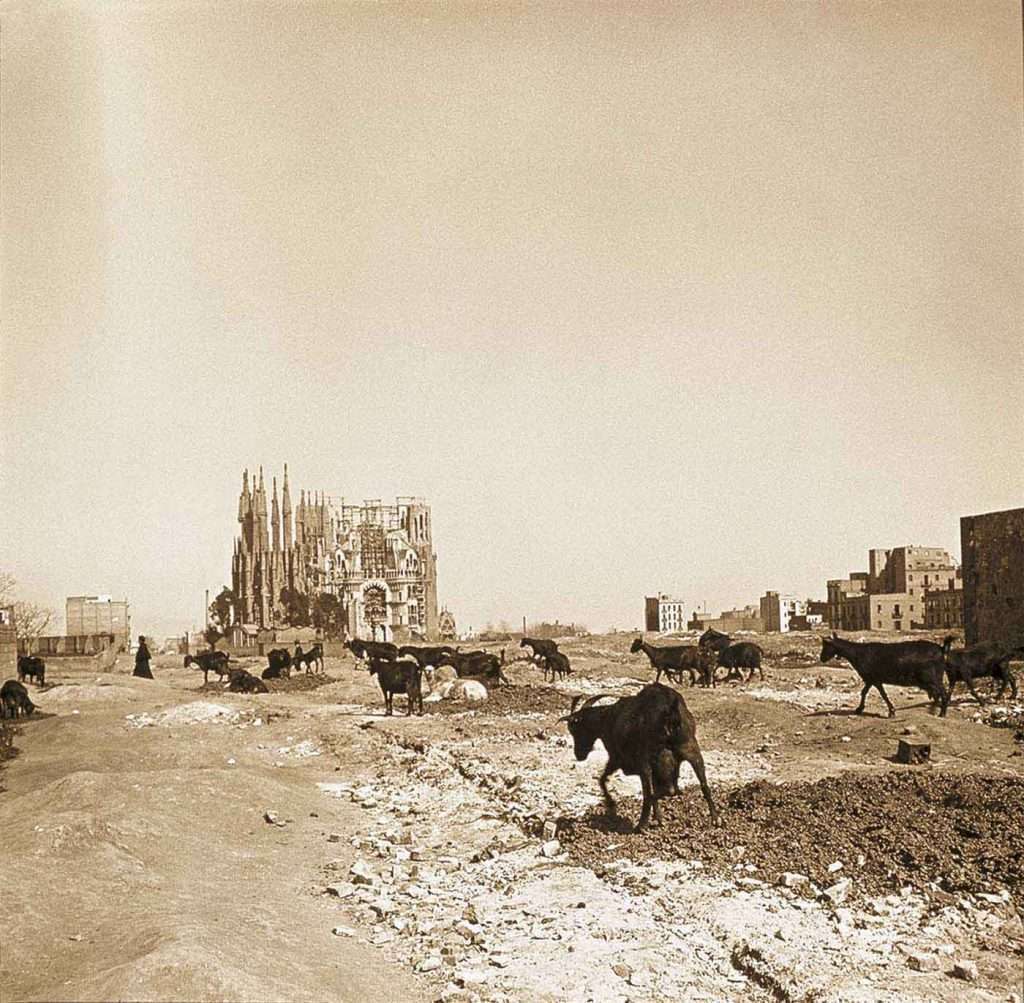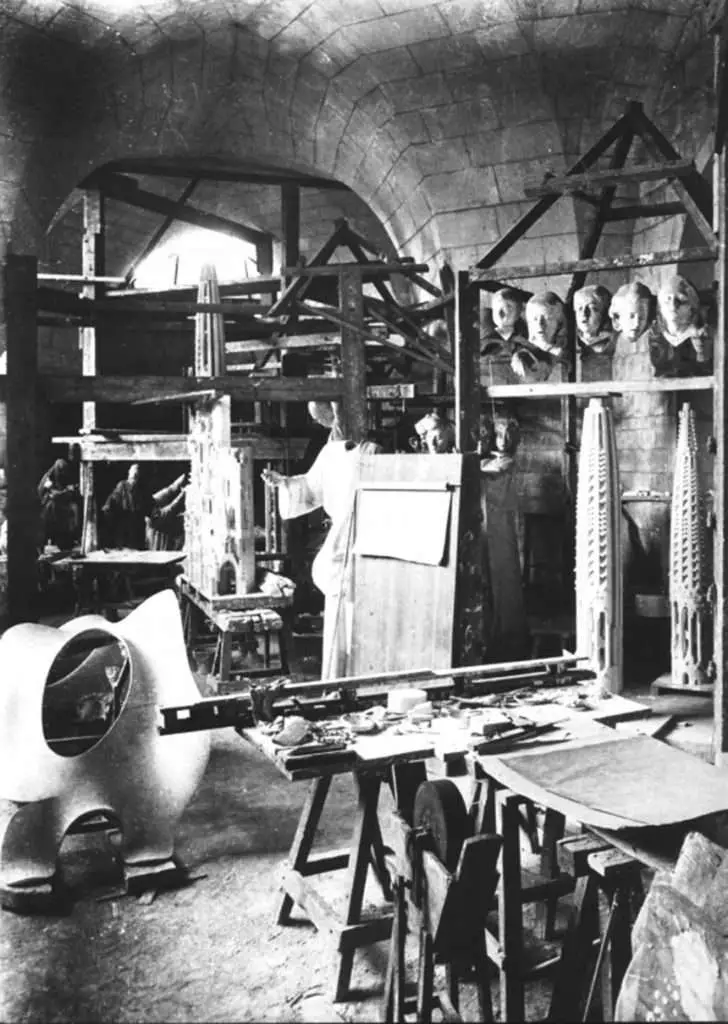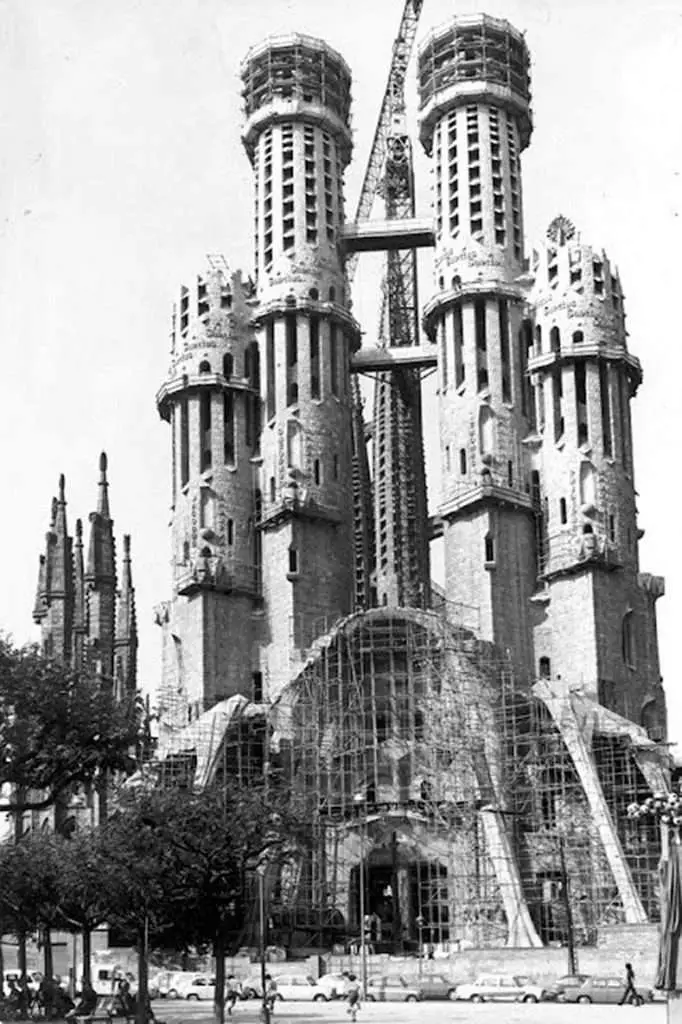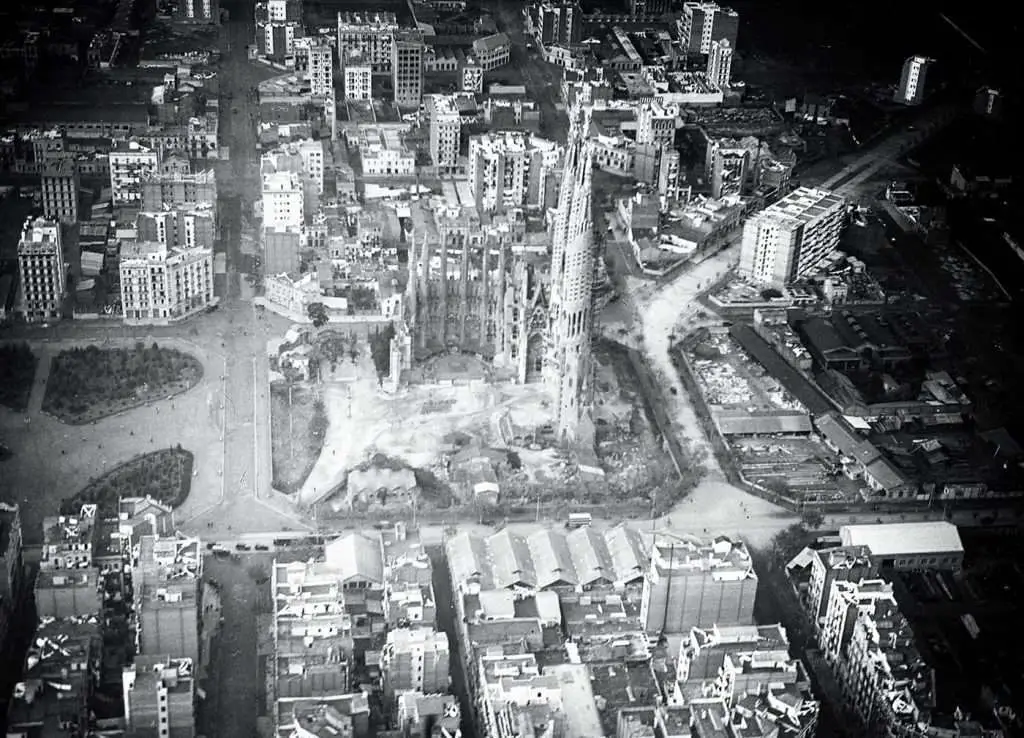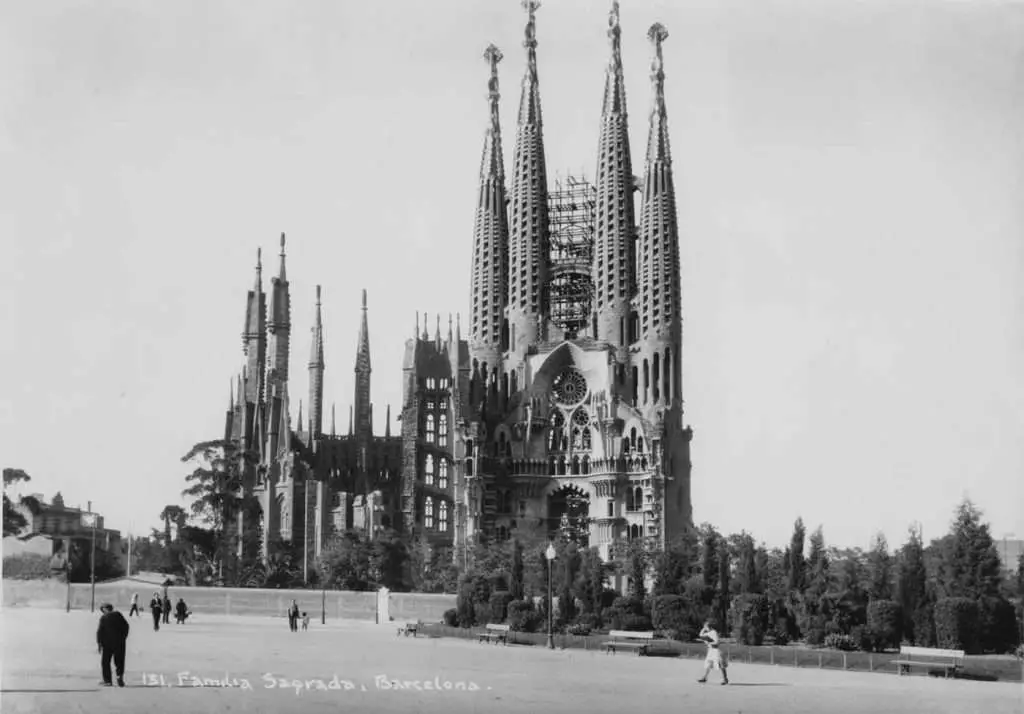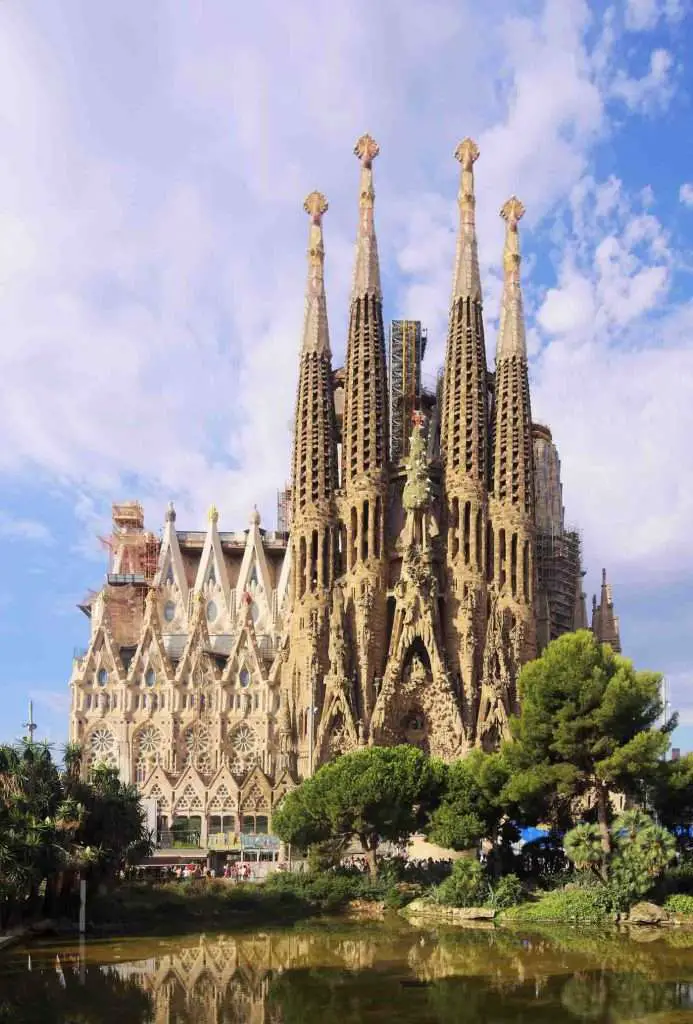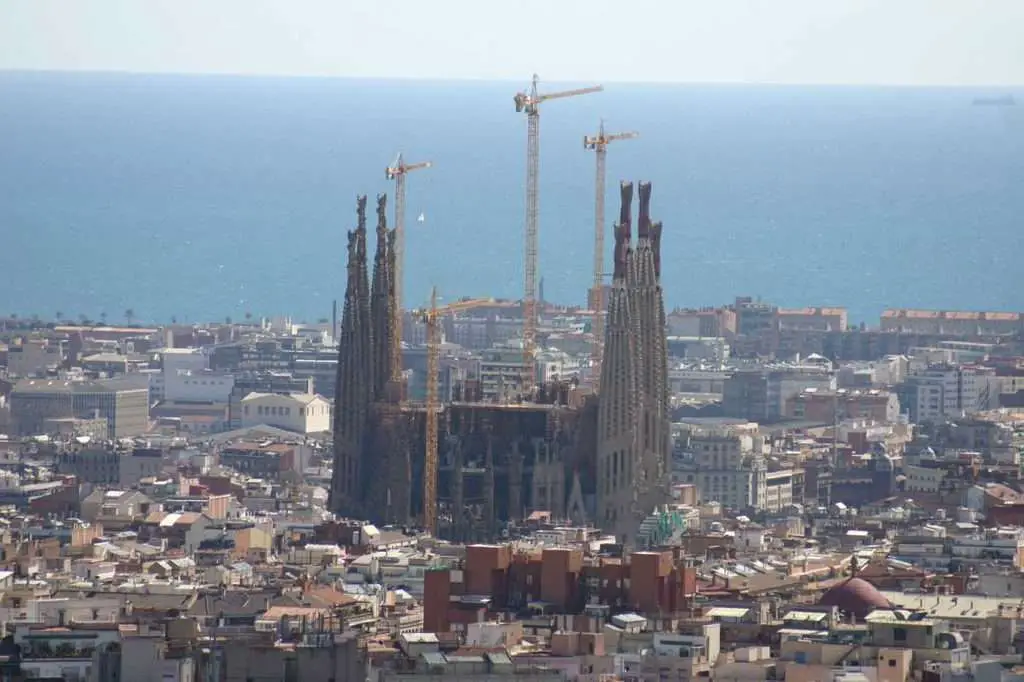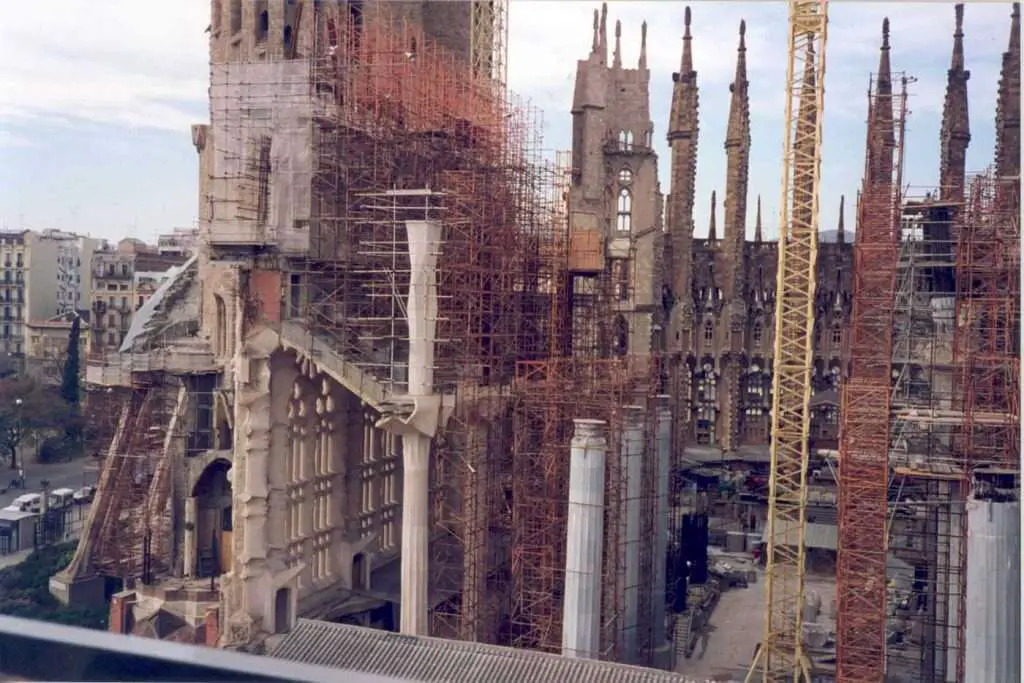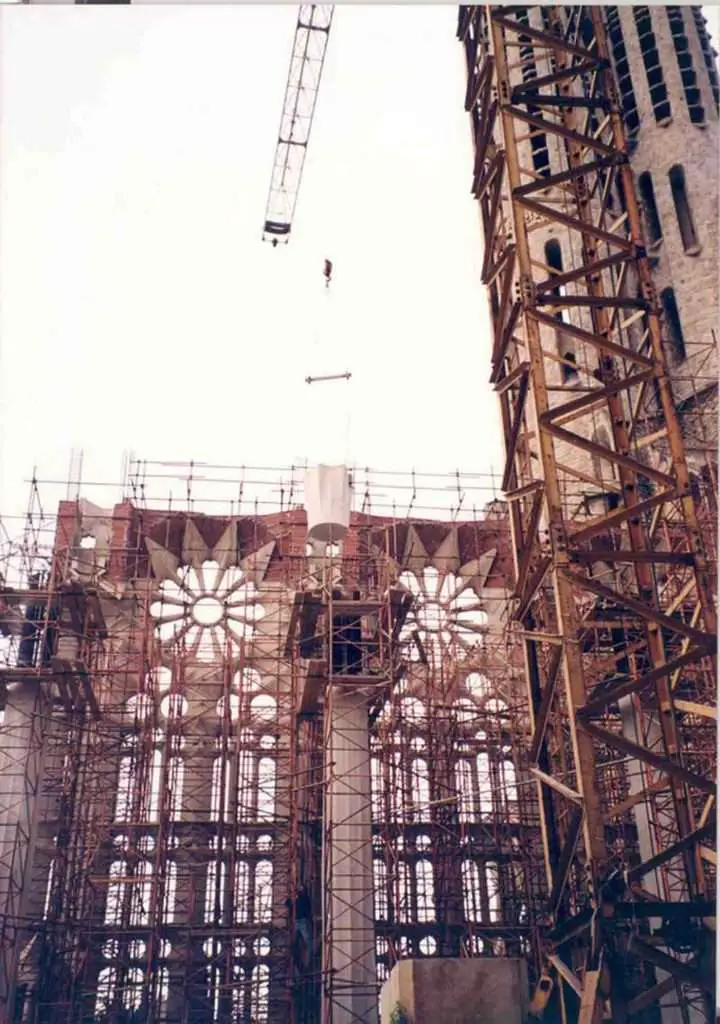Table of Contents
The beginnings of Sagrada Familia, one of the world’s most famous temples
The foundations of Sagrada Familia date back to 1866, when a group of St. Joseph followers decided to build a temple in his honor. On March 19, 1882, the feast of San José, the first stone was put in the midst of a 12,000-square-meter plot of ground. Don Francisco de Paula del Villar y Lozano was the first architect, but he abandoned the project due to conflicts.
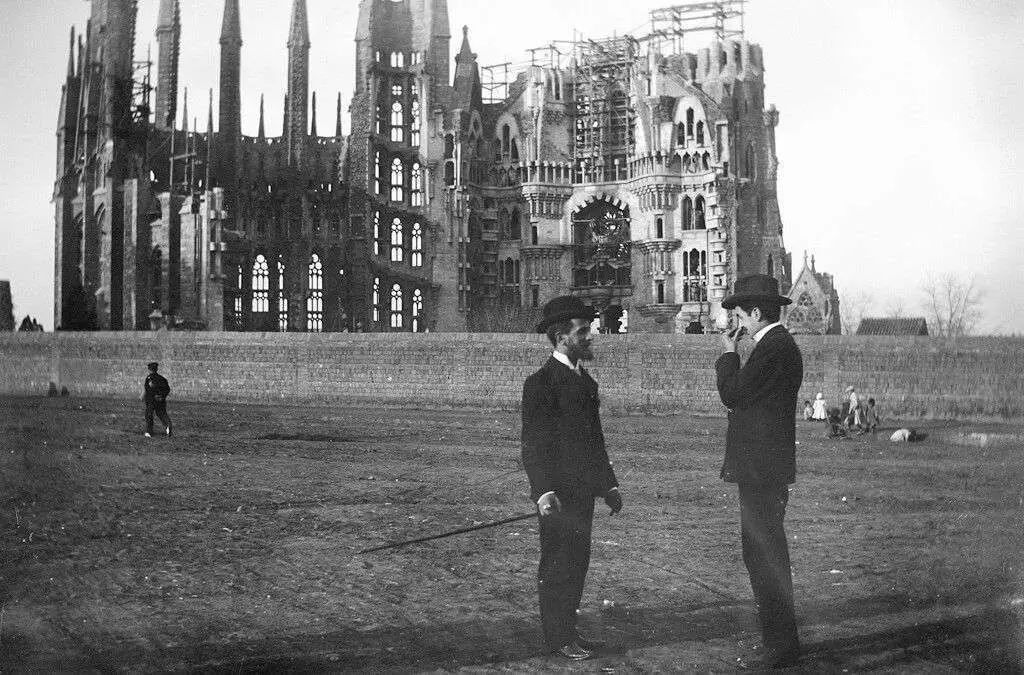
Styles such as Neo-Gothic and others
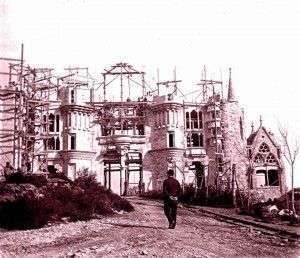
Antonio Gaudi took over as director of the works a year later. And he began to reveal a dream that was both human and divine in nature. Gaud died in 1926, just in time for the first of the eighteen towers to be completed and the building to be completed in 2026. The neo-Gothic crypt was the starting point for the Coonstruction. Gaudi, on the other hand, changed his mind about the design. In his hands, Gothic and Art Nouveau would blend to create a unique and particular style.
The Nativity’s facade was the first.
It summarizes the biblical narrative in a pictoric fashion, much like a stone page. From a conceptual standpoint, the project is a tremendous catechism, full with symbols. This historic facade with striking architectural improvements was designed by Gaud. He set up his workshop and the space where he spent the last years of his life inside the construction site during the beginnings of Sagrada Familia. The author of La Pedrera and Park Guell solely worked on the Sagrada Familia from 1912 to 1926 (the year of his death). He also created Temporary Schools for the instruction of community youngsters and construction workers.
The Nativity façade’s bell towers were built in 1930, while the Faith gate and central cypress were completed in 1933.
The great adventure of building a cathedral in the XX and XXI centuries
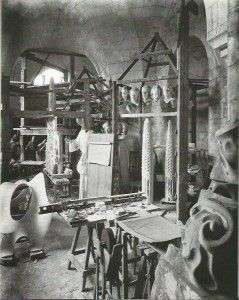
Antoni Gaudi spent hours creating models that were works of art in the early stages of the construction of the Sagrada Familia. They were employed as a makeshift laboratory in which he could test out his new creative ideas. The restoration of the remains of these models using current technologies is what allows us to imagine what Gaud wanted today.
Following the architect’s death, the basilica’s construction progressed at a glacial pace. In ten years, Spain would be engulfed in civil war, with devastating effects for the Sagrada Familia: some of the plans were destroyed in a fire. To reconstruct the project’s DNA, three generations of architects were required.
The evolution of the Sagrada Família
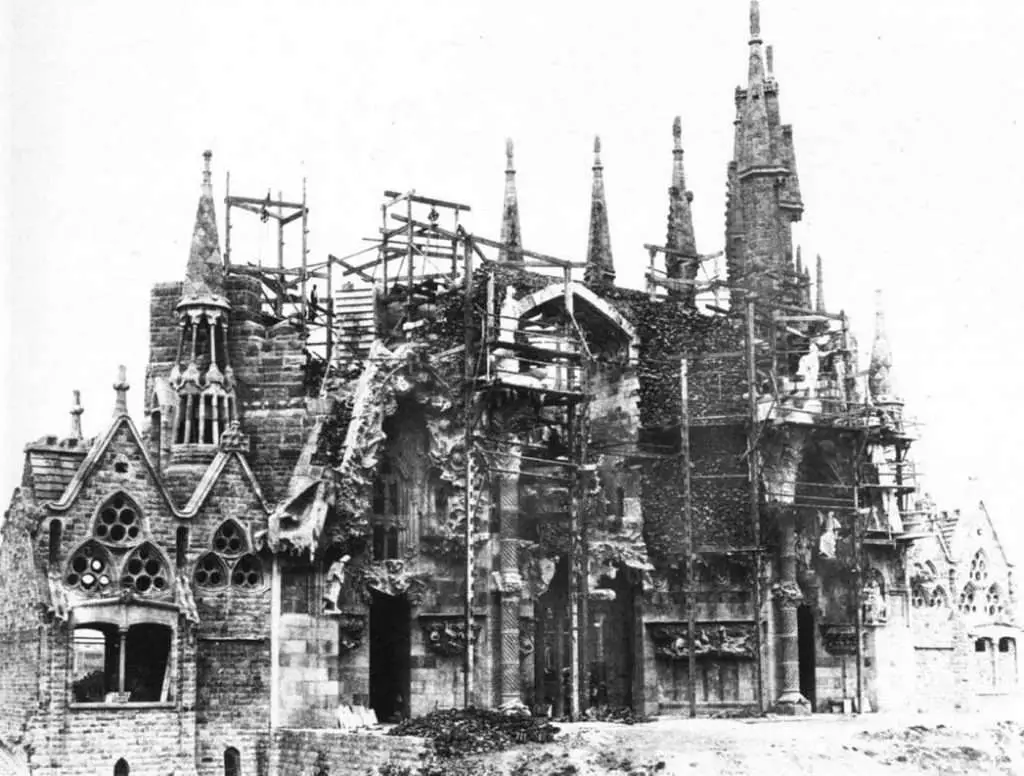
In 1883, Antonio Gaud began planning a structure that he dubbed the “church of the poor.” Gaud was entrusted to head the project in 1884 after differences between the founding association and the original architect, and so generated an entirely new design.
Gaud, who was already well-known in Barcelona for his one-of-a-kind creations, had his sights set on something remarkable, which he would eventually achieve. He gave up all secular labor in his later years to devote his life to the basilica known as La Sagrada Familia History, or “Holy Family.”
He worked on the project for more than 40 years, devoting the final 15 years of his life to it. “My client is not in a rush,” Gaud is believed to have laughed when asked about the construction’s extraordinary length.
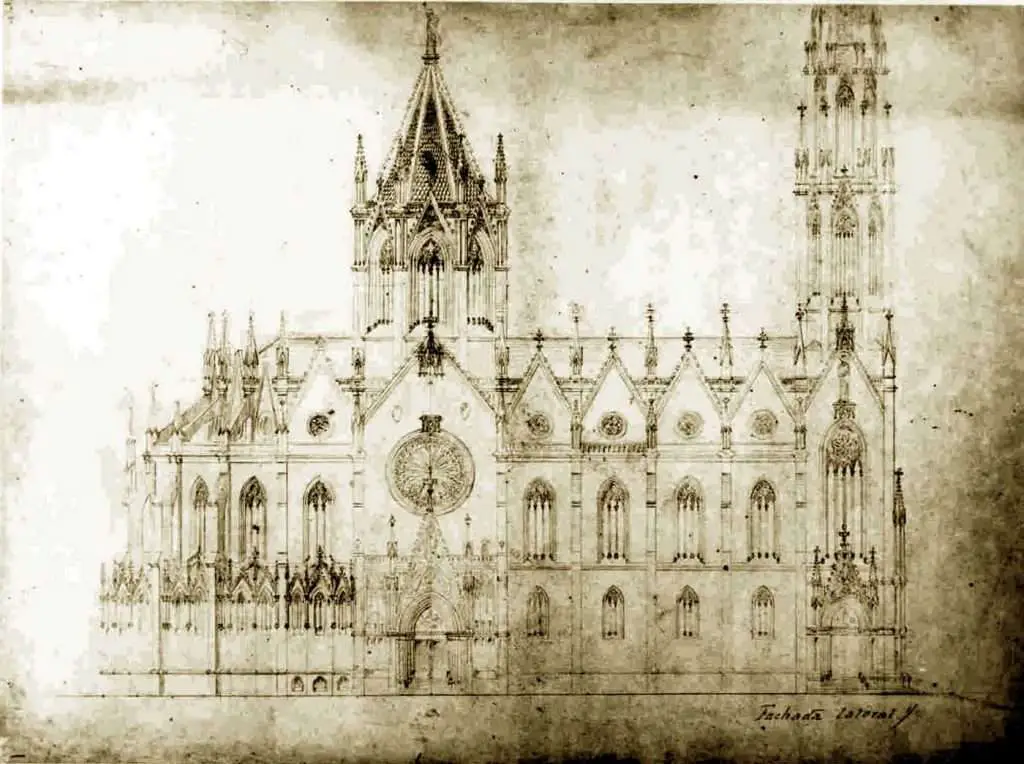
He oversaw the work with the help of other painters until his death on June 7, 1926, when he was ran over by a city tram. Several cab drivers declined to take him up because of his scruffy appearance and empty pockets, fearing he wouldn’t be able to pay the trip.
He was eventually brought to a Barcelona pauper’s hospital. The injured Gaud was not identified until the next day, when he was found by a friend.
Gaud reportedly refused to be transferred to a better hospital, claiming, “I belong here among the poor.” He died two days later and was interred in the crypt under Sagrada Famlia, his unfinished masterpiece.
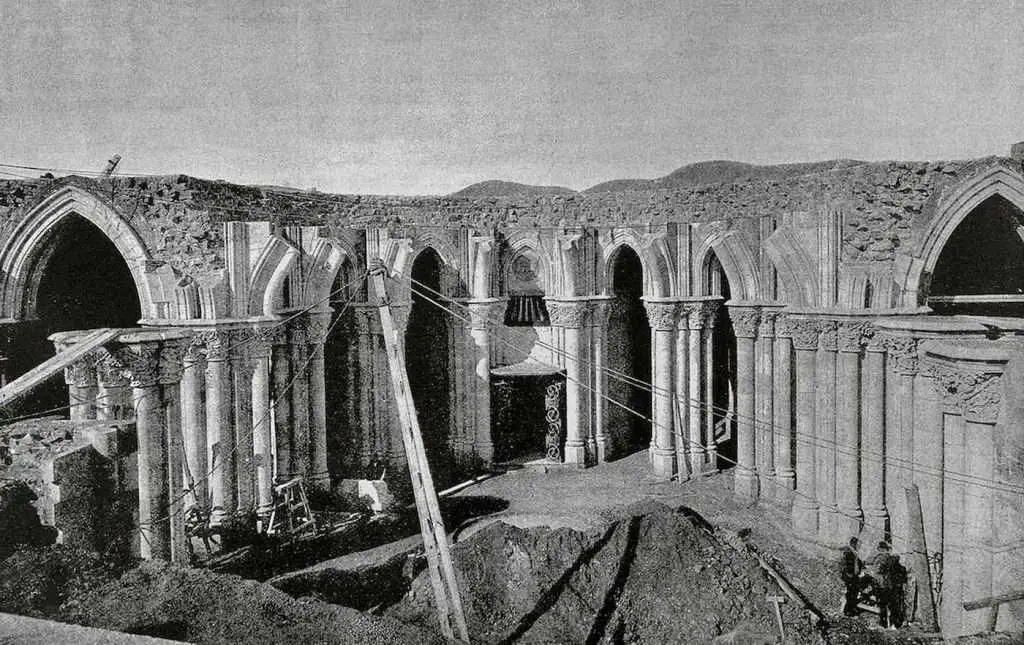
Josep Maria Bocabella, the founder of the spiritual Association of Devotees of Saint Joseph, envisioned the church as a way to promote Catholic ideals at a period of social and religious unrest in Spain.
Antonio Gaud accomplished this goal by creating a church devoted to the Holy Family. He wished for the Sagrada Famlia to serve as a holy bridge between ordinary people and God. Every aspect, from the colors to the intricate sculptures, is filled with religious symbolism.
When it came to designing the cathedral, he was inspired by nearby Montserrat, a famous pilgrimage destination perched atop a rugged peak. The church’s three facades symbolise birth, death, and resurrection.
Gaud planned the church to be the “final great sanctuary of Christendom,” so every aspect of the design is loaded with mystic Christian symbolism.
The spindle-shaped towers are perhaps the most noticeable feature. The finished design has 18 tall towers, representing the 12 Apostles, the four Evangelists, the Virgin Mary, and – tallest of all – Jesus Christ, in ascending order of height.
The construction of the Sagrada Famlia was gradual and hampered by the Spanish Civil War. Revolutionaries set fire to the crypt and stormed into the workshop in July 1936, partially destroying Gaud’s original blueprints, sketches, and plaster models, resulting in 16 years of effort piecing together the master model’s shards.
The construction of the Sagrada Famlia is currently ongoing and will be for some time. As stipulated in the original plan, the massive construction must be totally funded by human donations. The ongoing construction of the Sagrada Famlia is nearly entirely funded by the millions of visitors that come each year.
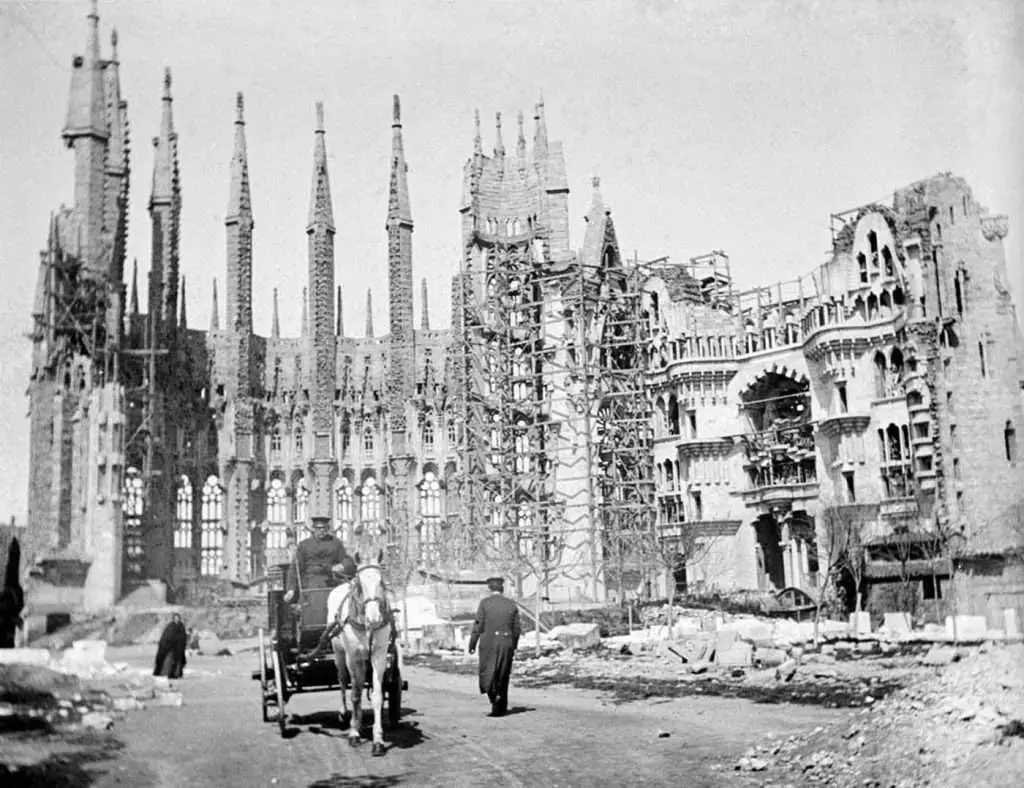
The Sagrada Famlia’s Design Concepts
The Nativity façade will face the East, the Passion façade will face the West, and the Glory façade will face the South (yet to be completed). The Nativity Façade was completed before the 1935 construction stoppage and displays the most direct Gaud influence.
Gaud designed the Passion façade in 1917, and it was completed according to his plan. The building of the steeples, which were erected over an elliptical layout, began in 1954 and was completed in 1976.
Its sparse, gaunt, anguished features, such as skeletal images of Christ being scourged at the pillar and Christ on the Cross, are particularly striking. Josep Maria Subirachs is the creator of these divisive designs.
The Glory façade, which has been under construction since 2002, will be the largest and most magnificent of the three, representing one’s ascension to God. It will also incorporate aspects such as the Seven Deadly Sins and the Seven Heavenly Virtues, as well as scenes from Hell and Purgatory.

Words from the liturgy are used as themes throughout the decoration. The steeples are adorned with words like “Hosanna,” “Excelsis,” and “Sanctus,” while the enormous doors of the Passion façade depict parts from the New Testament’s Passion in a variety of languages, primarily Catalan.
The Apostles’ Creed will be carved onto the Glory facade, while the Lord’s Prayer will be rewritten in Catalan and surrounded by several variations of “Give us this day our daily bread” in many languages.
Faith, Hope, and Love are represented by the three doorways. Each one is also committed to a particular aspect of Christ’s life. The Nativity Façade commemorates his birth and includes a cypress tree, which represents life.
His glorious period is commemorated on the Glory façade. His anguish is symbolized by the Passion facade. The Latin text of Hail Mary is carved into the apse spire. Overall, the Sagrada Famlia is a representation of Christ’s lifetime.
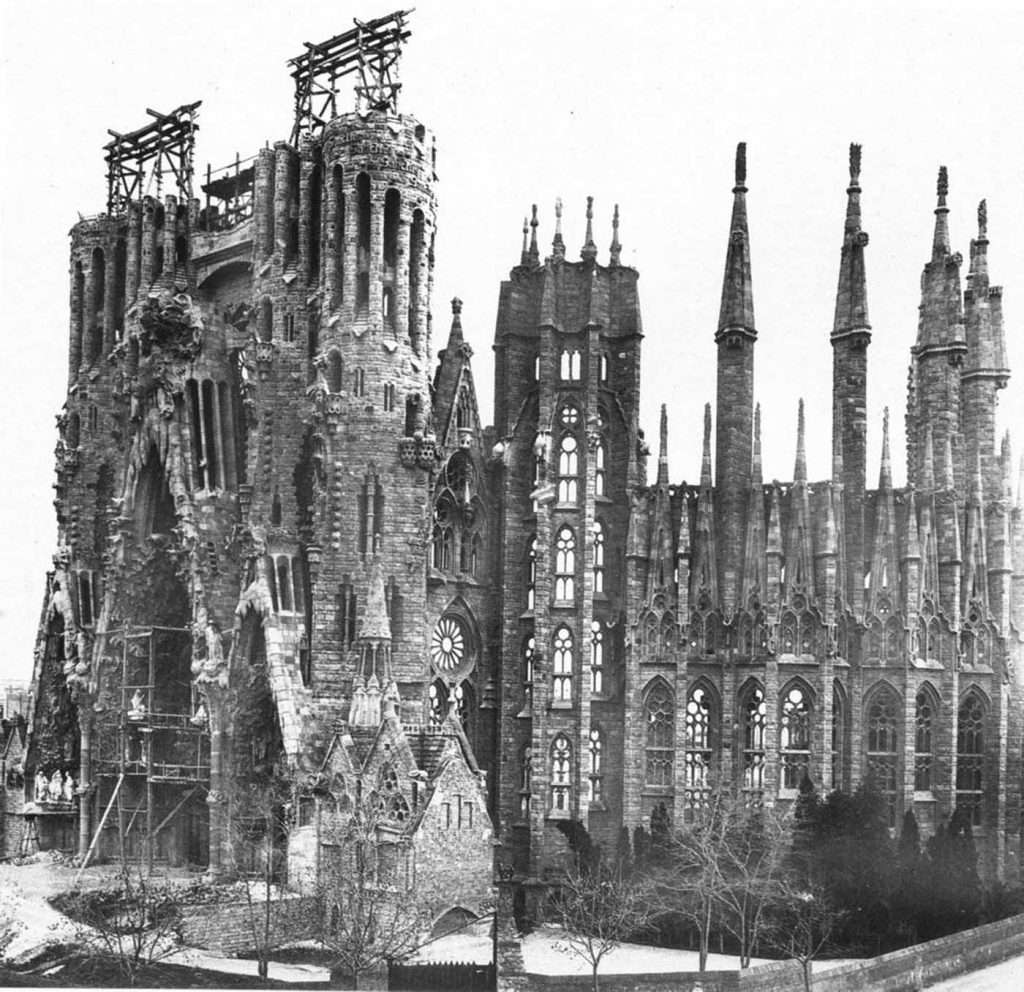
In a 1960s article, art historian Nikolaus Pevsner described Gaud’s buildings as “expanding like sugar loaves and anthills,” and describes the ornamentation of buildings with shards of broken crockery as probably “poor taste,” but handled with life and “ruthless daring.”
The structure’s design has sparked controversy. The response from Gaud’s fellow architects was overwhelmingly favourable; Louis Sullivan praised it, calling it the “best piece of imaginative architecture in the last twenty-five years.” It’s spirit encapsulated in stone!”
The Sagrada Familia History was commended by Walter Gropius, who called the structure’s walls “a masterpiece of technical perfection.” It was described as “sensual, spiritual, whimsical, and joyful” by Time magazine.
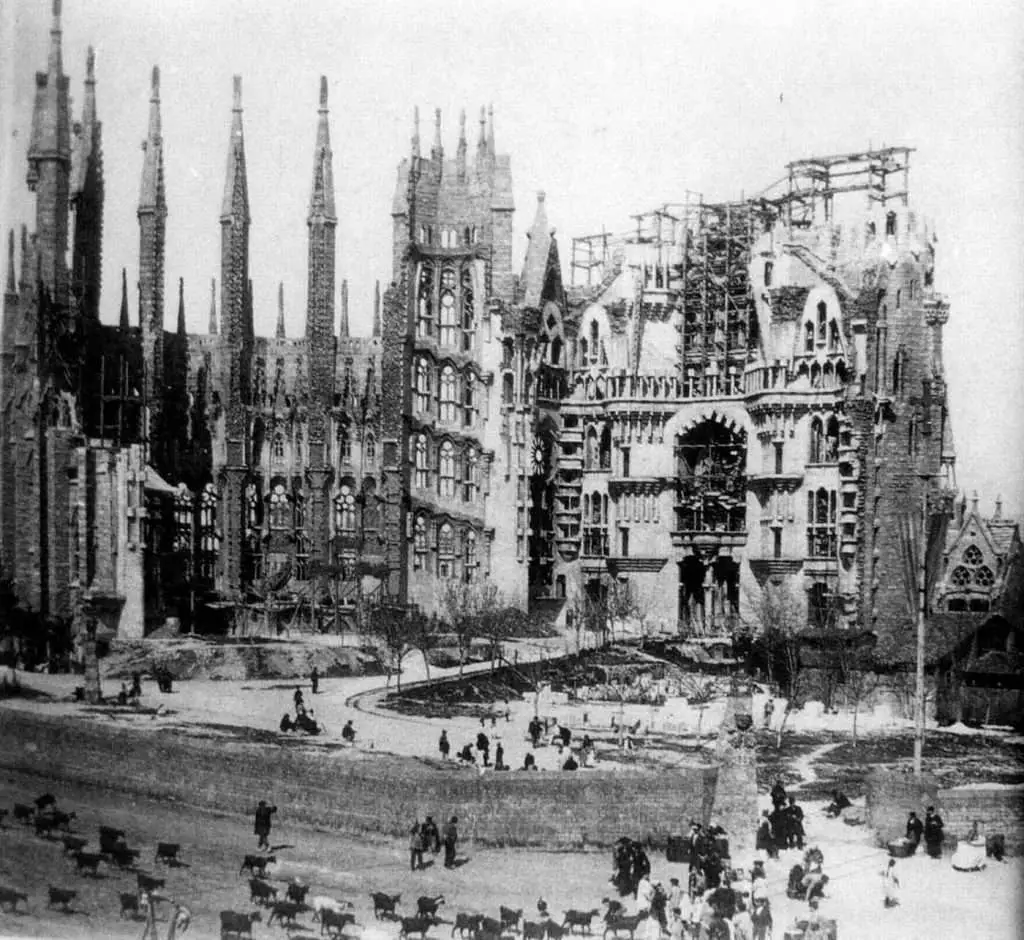
However, it has been described as “one of the most awful structures in the world” by novelist George Orwell, “one of the strangest-looking serious buildings in the world” by author James A. Michener, and “one of the most hideous buildings in the world” by British historian Gerald Brenan. “Nothing so nasty or arrogant can be found even in the European architecture of the time.”
Despite this, the building’s striking silhouette has become synonymous with Barcelona, attracting an estimated 3 million tourists each year.
Tourists, beauty, and religion in the Sagrada Familia
It was built as an expiatory temple from the start, which implies that all of the costs were covered by voluntary donations. Today, thanks to a massive number of visitors of various nations and faiths, development is moving at a breakneck pace. Many people still think of it as a Christian church, but it’s not uncommon to hear people say that it may become a worldwide symbol of faith.
Gaudi was killed when a streetcar ran over him. He’d recently built the Saint Barthelemy Bell Tower, one of the four Bell Towers. The structure will be completed with a central tower devoted to the figure of Jesus. It will be like a stairway to heaven with 172.5 meters. This will be one of the world’s tallest churches, but it will always be in proportion to the iconic Montjuc hill. Gaud desired to converse with the divine, yet he could never overcome the divine’s creation.
Source :
All credits goes to owner
